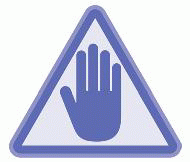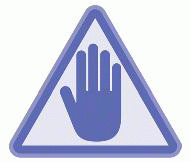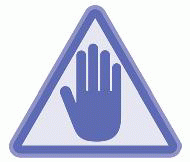The goal of safe infusion care is to minimize risk and improve outcomes. The key factor in this process is ensuring patient safety. Each chapter in this edition addresses patient safety. This chapter focuses on a broader view and the need to create and maintain a culture of safety.
The law and its interpretation can lead to doubts and questions regarding the legal rights and obligations of nurses to administer infusion therapy. Legal standards are an integral component of a performance improvement (PI) program. As infusion practice becomes more complex and specialized, and as infusion experts gain international acceptance, nurses are becoming more involved in procedures formerly performed solely by physicians/licensed independent practitioners (LIPs). Because violation of the Medical Practice Act is a criminal offense, infusion nurses need to be well versed on the subject and the law, not only to protect themselves but also to ensure safe outcomes for their patients.
External Drivers That Influence Safety
External drivers that influence the quality of nursing care include regulation and legislation, accrediting organizations, efforts to link payment with performance, the need for interdisciplinary guidelines, the commitment of professional organizations, and the level of public engagement. Regulating agencies issue mandates that directly or indirectly impact the role of the health care professional, in this case, the infusion nurse. These agencies include the Food and Drug Administration (FDA), the Occupational Safety and Health Administration (OSHA), the Joint Commission (TJC), state regulatory boards, and professional organizations.
Applying Law to Practice
In organizations or hospitals, as well as in states in which no written opinion relevant to IV therapy exists, nurses are legally required to perform any nursing or medical procedure they are directed to carry out by a duly licensed physician/LIP unless they have reason to
believe harm will result to the patient from doing so. To meet their legal responsibilities to patients, nurses must be qualified by knowledge and experience to execute the procedure; otherwise, they may properly refuse to perform it.
In cases in which the nurse finds no medical reason to question a physician/LIP’s order, the nurse’s failure to carry out such an order subjects him or her to liability for any consequent harm to the patient. It has been established by law that in a question of negligence, individuals are not protected because they have “carried out the physician/LIP’s orders.” Rather, they are held liable in relation to their knowledge, skill, and judgment or lack thereof.
Several states recommend that schools and colleges of professional nursing include an IV therapy course in the curriculum. The course should provide the student nurse with clinical instruction and experience in IV therapy. Infusion nursing specialists nationwide have been instrumental in developing the content for such programs.
CONTRACTED PERSONNEL OR FLEXIBLE STAFFING
Cyclic staff shortages create a market niche for the interim or long-term use of contracted personnel. Thus, nurses working in institutions that use contracted nurses as well as nurses whose employers are contracted agencies must be aware of their own accountability for their actions and practice in addition to their accountability to their employers, patients, and colleagues. The Institute of Medicine (IOM) report identified the need for all health care organizations to have in place mechanisms to achieve “flexible” staffing in instances when the patient census,
acuity, or both demand staffing at a higher level than anticipated. The IOM recommends using internal nursing “float pools” composed of nurses employed by the health care organization. Although using floating nurses may still result in nurses being assigned to patient care units with which they are less familiar, using an organization’s own float pool of employed nurses at least assures that these nurses have received the same orientation and in-house training as other nursing staff permanently assigned to specific nursing units. Float pools would also assure that, even if the floating nurses are not familiar with policies and procedures unique to individual patient care units within the organization, the nurses would be familiar with organization-wide policies and practices pertaining to patient safety, such as an organization’s error reporting system, decision support systems, and information technologies (
Page, 2008).
PRIVATE DUTY NURSE
A private duty nurse, who works under the direction, supervision, and control of a hospital and private physician/LIP, is subject to the rules and regulations of the hospital concerning all matters relating to nursing care. The institution’s joint policy statement may note that the private duty nurse who has complied with the criteria applicable to the administration of IV therapy may give an IV infusion.
AGENCY NURSE
Nationwide, temporary staffing agencies provide valuable assistance during shortages of licensed professional personnel. When given responsibility for the administration of intravascular therapies, agency personnel must be oriented to the health care facility’s policies and procedures and the functions performed by specialized department personnel. When the facility must use agency staff, every effort should be made to ensure patient safety, public protection, and viability of the IV therapy program.
ALLIED PERSONNEL
Because of downsizing, restructuring, and nursing shortages in many areas of the country, various aspects of IV therapy may be performed by allied health personnel other than by registered nurses (RNs), such as licensed practical nurses (LPNs), licensed vocational nurses (LVNs), and patient care technicians (PCTs). When performing IV care, LPNs or LVNs must have the necessary preparation and experience. In addition, they must be authorized by their employer and by the state in which they work before they perform any procedures. LPNs and LVNs are governed by the Nurse Practice Act in their state and are accountable for any procedure they accept and perform. PCTs, depending on their training and place of employment, may be trained to set up the equipment to start an IV or to monitor the IV while it is in place.
Guarding Against Malpractice
The IV nurse’s risk of involvement in
malpractice suits is increasing with the increasing complexity of therapy and delegation of responsibility for infusion therapy in some institutions to less qualified paraprofessionals. In many cases, the professional nurse is legally responsible for the work performed by nonlicensed assistive personnel. Therefore, many of
the functions performed by the nurse have important legal consequences. An understanding of the legal principles and guidelines involved is necessary if daily professional actions are not to result in unwanted malpractice suits. Terminology related to potential litigation is presented in
Box 2-2.
If the hospital/organization or involved professional person (or both) is to be charged with malpractice resulting from injury to a patient, the patient’s representative should be able to demonstrate that
A standard of care or duty can be established.
The standard of care or duty was not met.
The patient was harmed or injured because the standard was not met.
It was possible to foresee that injury or harm would result from not meeting the standards (depending on state law).
Personal Liability and Protective Measures
The rule of personal liability states that “every person is liable for his (or her) own tortious conduct” (his own wrongdoing). No physician/LIP can protect a nurse from an act of negligence by bypassing this rule with verbal reassurances. The nurse cannot avoid legal liability even though another person may be sued and held liable. For example, the physician/LIP who orders placement of a peripherally inserted central catheter (PICC) cannot assume responsibility for the nurse who is negligent in implementing the action. If harm occurs as a result of the action, the nurse is held liable for this wrongdoing.
The rule of personal liability is relevant to medication errors as well. Medication errors are a common cause of malpractice claims against nurses. Negligence results from the administration of a drug to the wrong patient, at the wrong time, in an incorrect dosage, or in an improperly prescribed manner. If the physician/LIP writes an incomplete or partially illegible order and the nurse fails to clarify it before administration and harm results, the nurse is liable for negligence. The same applies to the administration of IV fluids. Nurses
have a legal and professional responsibility to know the purpose and effect of the IV fluids and medications they administer. They must ensure that patients receive the prescribed volume of fluid at the prescribed rate of flow.
The rule of personal liability applies to nurse administrators and to nurses under their supervision. Although administrative nurses usually are not held liable for the negligence of nurses under their supervision (because every person is liable for his or her own wrongdoing), a director is expected to know if the nurse is competent to perform assigned duties without supervision.
On the other hand, directors who are negligent in the assignment of an inexperienced nurse or a nurse who requires supervision may be held liable for the acts of the nurse. Floating nurses to units to provide direct patient care when they are not experienced at the assigned level is a good example. Some institutions float nurses only to like intensive care units.
OBSERVE CAREFULLY
Nursing today requires a strong knowledge base and good observation skills. The act of observation is the legal and professional responsibility of the nurse. Frequent observation is imperative for the early detection and prevention of complications. Undetected complications that are allowed to increase in severity because of failure to observe the patient constitute an act of negligence on the part of the nurse.
ESTABLISH THERAPEUTIC RELATIONSHIPS
Nurse-patient relationships play a significant role in influencing patients to initiate legal liability against nurses. Nurses performing infusion therapy must be particularly aware of and attentive to the emotional needs of their patients, particularly when patients experience pain and apprehension during such procedures as catheter insertion. Clearly, specialists must foster appropriate interpersonal relationships. Nurses who are impersonal, aloof, and so busy with the technical process of starting an IV infusion that they have no time for establishing kindly relationships are the suit-prone nurses whose personalities may initiate resentment and later malpractice suits.
Patients most likely to sue may be resentful, frequently hostile, uncooperative, and dissatisfied with the level of nursing care. By demonstrating respect, care, and concern for all patients, as well as rendering skilled, efficient nursing care, nurses may avoid malpractice claims.
REVIEW AND CLARIFY CURRENT POLICIES AND PROCEDURES
Policies and procedures should be detailed, and all nurses practicing infusion therapy should be required to know them and review them periodically. Policies and procedures should follow national guidelines established by the Centers for Disease Control and Prevention (CDC)
and Standards of Practice established by the Infusion Nurses Society (INS). These guidelines provide a model for IV nurses and foster optimal care for the patient receiving IV therapy.
DOCUMENTATION
Documentation is essential as a legal record of care provided a communication tool for other health care professionals and a determinant of eligibility for reimbursement. Detailed, accurate, adequate documentation prevents reinvention of the wheel (or duplication of effort and services) by saving time, ensures that the patient masters skill sets, and protects the health care provider or the institution. Tools used to document care include nursing care plans, flow sheets, progress notes, periodic updates developed by home care providers, and discharge summaries (
Rankin & Stallings, 1996).
Electronic medical records (EMR) have facilitated the process. A commercially available program involves an innovative technology that combines the safety features of an automatically programmed infusion pump with software that provides clinical visibility to realtime infusion data. The nurse validates the information, and the system begins infusing the medication to the patient as prescribed. The clinician can view the trends in real-time and in conjunction with the patient’s physiologic and hemodynamic data. http://www.cerner.com/solutions/Client_Stories/Wellspan_Health/
Documentation should include the intervention performed, the patient’s response to the intervention, and the subsequent outcomes. Sentinel or adverse events should also be documented consistent with institutional policy. By providing an accurate record of the care delivered and by structuring that care on evidence-based nursing practice and published standards, the nurse who is responsible for providing IV care ensures safe practice. The quality of infusion therapy is evaluated by the quality of the nursing documentation.
Accurate and complete documentation is considered a professional standard of nursing practice. Documentation that is incomplete or not consistent with organizational policy, state regulations, or state boards of nursing can be used to support an allegation of negligent care.
KEEP CREDENTIALS CURRENT
Credentialing of IV nurses nationwide began with the first certification examination in 1985. The credentialing process consists of three components: licensure, accreditation, and certification.
Licensure represents the entry into practice level afforded to all professional nurses who successfully complete the RN examination.
Accreditation establishes that a program or service meets established guidelines. Accreditation is offered to facilities, agencies, and other health care providers by such groups as TJC, which is an accrediting body that evaluates (rates) the programs of hospitals and home care agencies.
Certification is the highest level attainable by the professional IV nurse. It is the process by which society attests to the professional and clinical competence of the person who successfully completes the process.
NURSE COMPETENCE
Defining and evaluating
competency in nursing is part of the yearly assessment of professionals in all clinical settings. The IV nurse’s competence in performing peripheral IV therapy should be assessed periodically. Of course, the competent IV nursing professional should be able to perform the procedure using aseptic technique. The health care environment is changing drastically to demand quality through efficiency and effectiveness in all aspects of patient care. Competency is required to attain quality and to provide the patient with optimal outcomes. Proof of infusion competency is crucial to ensure excellence in infusion care for all patients (
Weinstein, 2000).
Nurse educators are challenged to implement teaching strategies that promote learners’ clinical competency and critical thinking skills. Additionally, these educators are asked to base their curriculum decisions, teaching practices, and evaluation methods on current research findings. Simulation offers a unique mode for experiential learning and evaluation, but the appropriate use of the spectrum of simulation typology requires strategic planning. Although simulation provides educators with new educational opportunities, the potential use of simulation in competency testing cannot be achieved until educators and researchers acquire the knowledge and skills needed to use this education strategy, develop realistic case scenarios, and design and validate standardized and reliable testing methods (
Decker, Sportsman, Puetz & Billings, 2008). Simulation laboratories in clinical environments are helpful in documenting competencies in infusion nursing.
PRESERVE CONFIDENTIALITY
Health Insurance Portability and Accountability Act regulations have impacted confidentiality in all clinical settings. Confidentiality of patient information consists of three related components: privacy, confidentiality, and security (
Conner, 1999). With current advances in communication, such as electronic mail (e-mail) and other communication systems, including fax machines, cellular or cordless telephones, phone, tablet and computer applications, answering machines, and voice mail, nurses need to be aware and vigilant in preventing the misdirection, printing, interception, rerouting, or reading of information by unintended recipients.
Technology alone cannot ensure the legal and ethical use of e-mail and other communications in the health care environment. The e-mail message, for example, accurately documents communication and, as such, is part of the medical record and a legal document.
Expert security sources recommend the use of multilevel, individual passwords for all e-mail users, as opposed to generic group sign-ons and systems that require a single pass code (
Dorodny, 1998). Monitored audit trails and increased accountability of caregivers to their patients should be established (
Conner, 1999). Health information has become a commodity over the Internet, and every precaution should be taken to maintain the confidentiality of electronic additions to the clinical record.
PERFORMANCE EVALUATIONS
A standard must be carefully defined for the health care institution or the nurse to evaluate adequate performance. Tools useful in guiding this process include the following:
State Board of Nursing regulations for RNs and licensed practical/vocational nurses
American Nurses Association (ANA) Standards of Nursing Practice
Policies and procedures of the employing health care institution or agency
 PATIENT SAFETY
PATIENT SAFETY PATIENT SAFETY
PATIENT SAFETY PATIENT SAFETY
PATIENT SAFETY


